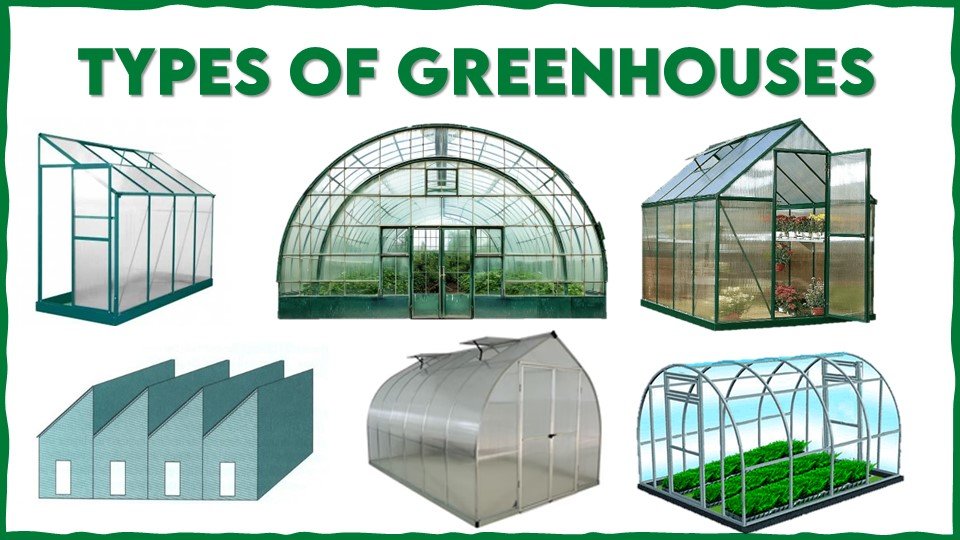Have you ever seen a greenhouse in your locality? Why is a greenhouse used? Can we grow anything under a greenhouse structure? How many types of greenhouses are there? All these will be answered in this article.
Firstly, let us get introduced to what exactly is a greenhouse. These greenhouses are designed in a way whose features match the crop’s environmental requirements. Such structures have transformed over time as they provide an artificial environment for plants to grow under any climate condition.
Greenhouses can be of different sizes, ranging from small backyard models to extensive commercial installations, which are designed and created by specific requirements and conditions in a particular area. For those who grow plants, it is important to know the different types of greenhouses if they want to make the most out of their cultivation methods and increase production quantity. If you are an amateur gardener or grow your crops on a commercial scale, then discovering the right greenhouse kind can change your cultivation approach for plants, as well as develop a very green place all year round where life can thrive.
In this article, the different greenhouses are discussed along with their specific details and features. In this article, we shall explore various greenhouses along with their features. Greenhouses that are required to be installed at specific climatic or local conditions will also be discussed.
Types of Greenhouse Based On Shape
Even Span / A Frame Greenhouse
Description : This classic greenhouse design features an “A” shaped peaked roof that provides ample headroom and efficient stormwater drainage.
Features :A-frame greenhouses are usually made of glass or polycarbonate panels, providing good ventilation and light distribution.
Ideal for : Hobbyists and small farmers with limited space looking for a simple yet effective greenhouse design.
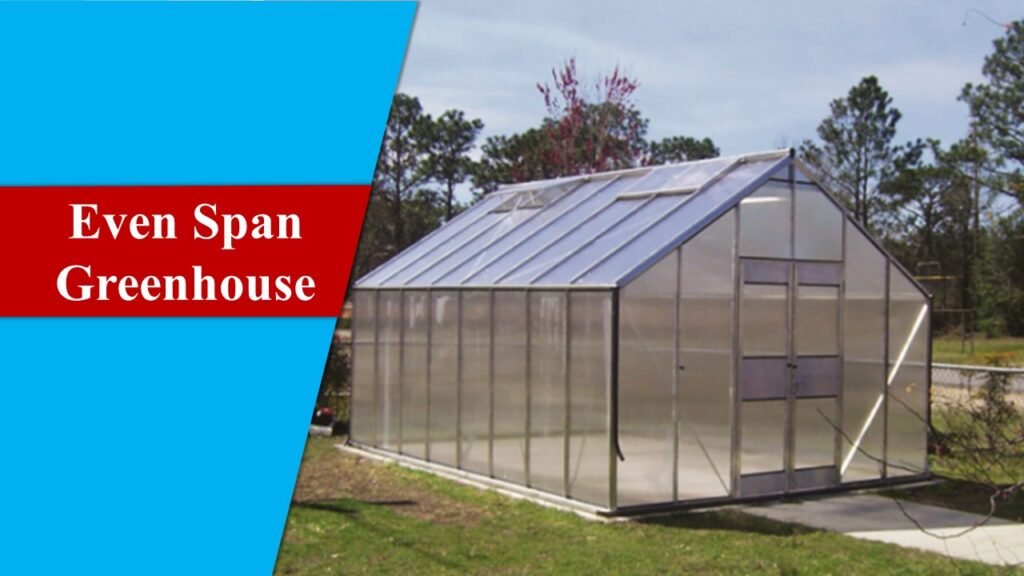
Also Read :
- Top 15 Medicinal Plants and Their Uses: Best Herbal Medicine
- Top 15 Best Farming Business Ideas for Impressive Profits
Quonset Greenhouse
Quonset greenhouses are round or semi-circular in shape, reminiscent of a semi-cylinder. It has a curved design that provides strength and stability, this feature makes it suitable for windy or snowy conditions. They are usually made of plastic or polyethylene stretched over a metal frame. Commercial growers and growers seek a durable and cost-effective greenhouse solution in areas with harsh climate conditions.
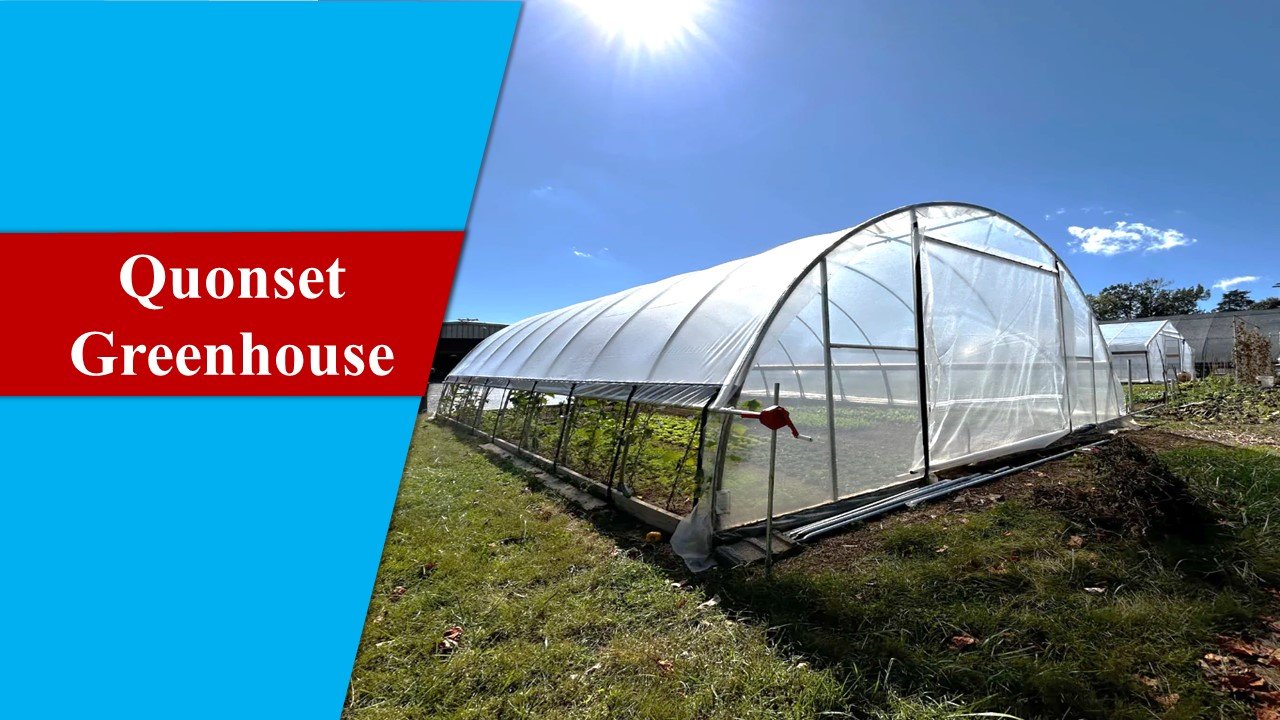
Lean To Greenhouse
- Description : Attached greenhouses are built onto an existing structure, such as a house or garage, and use walls for support.
- Features : They are space-saving and cost-effective and benefit from sharing heating and electricity with outbuildings.
- Ideal for: Homeowners with limited yard space or budget, and those looking for easy access to utilities.
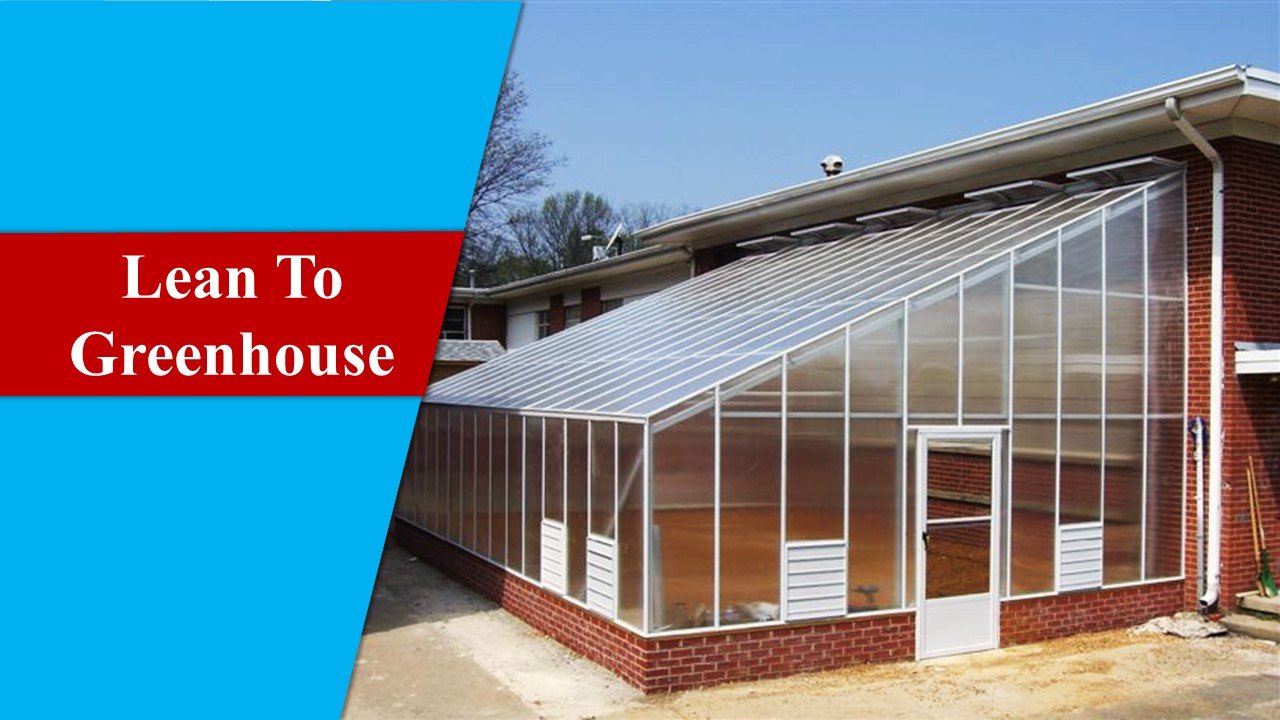
Multispan Greenhouse
- Description :Multi-panel greenhouses are made up of interconnected panels or sections, providing scalability and flexibility in size and arrangement.
- Features :Suitable for a variety of crops and production methods, including hydroponics farming and vertical farming.
- Ideal for :Commercial growers and research facilities require large production capacity and versatility in plant selection.
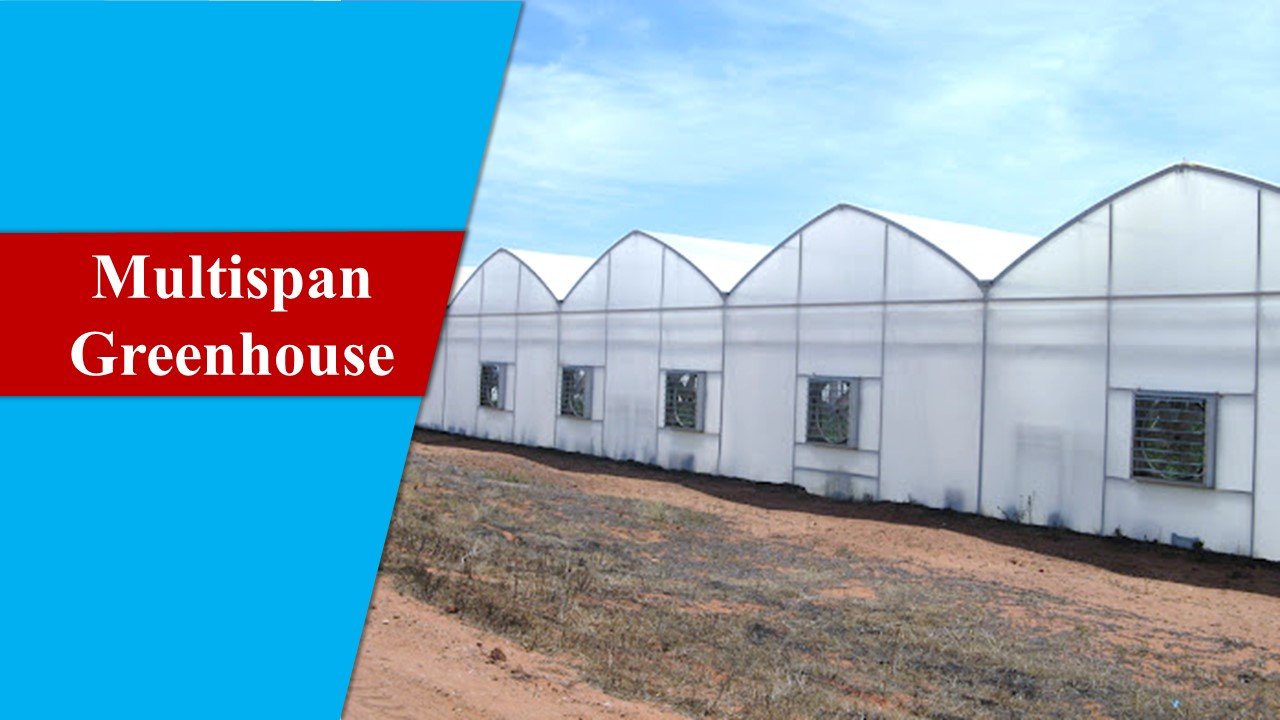
Sawtooth Greenhouse
- Description : These greenhouses have a series of roof ridges which are called sawtooth, as they resemble the teeth of a hand saw.
- Features :The sawtooth design helps maximize natural light penetration and allows for free movement of air making it ideal for hot regions. This greenhouse is usually constructed with materials such as glass or panels made of polycarbonate similar to a gothic arch greenhouse.
- Ideal for :Commercial growers in the tropics need even distribution of light throughout the year as well as good ventilation.

Also Read:
- 25 Profitable Agriculture Business Ideas with Low Investment
- 20 Best Low Investment High Profit Crops to Make You Rich
Other Types Of Greenhouses
Gothic Arch Greenhouse
Description
Gothic vaulted greenhouses feature a pointed arched roof for excellent snow removal capabilities and structural strength.
Features
Curved design maximizes headroom and enables efficient air circulation. This greenhouse is usually constructed with materials such as glass or panels made of polycarbonate.
Ideal for
Growers in areas with heavy snow or strong winds, and those who value aesthetics and indoor space.
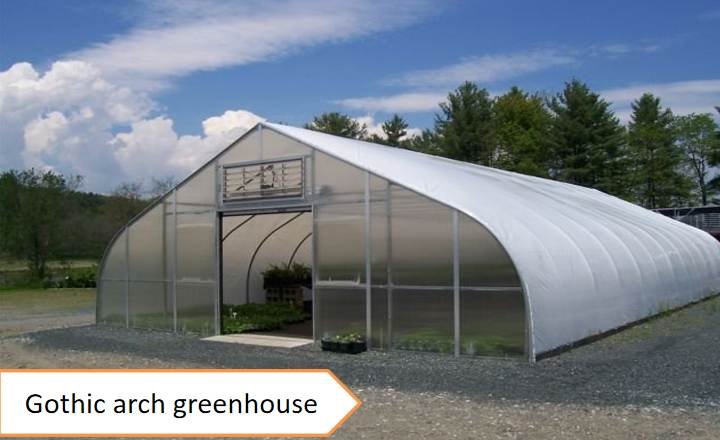
Geodesic Dome Greenhouse
Description
Geodesic dome greenhouses have a spherical or hemispherical shape composed of interconnected triangles.
Features
Known for their strength and energy efficiency, geodesic domes provide excellent light diffusion and are ideal for extreme weather conditions.
Ideal for
Innovative growers interested in sustainable and futuristic greenhouse design, as well as growers looking for optimal energy efficiency.

Read More:
- Amazing 25 Types of Snake Plants For A Refreshing Garden
- 30 Showy Plants That Attract Butterflies to Create Aflutter
Hoop House Greenhouse
Description
Hoop houses are characterized by curved roofs with metallic or PVC pipes bent into hoops providing support.
Features
They are quite economical to build and put up while at the same time protecting plants from adverse conditions and prolonging their growth period. Some of them can be covered with plastic film or greenhouse fabric.
Ideal for
Small-scale farmers or hobbyists who cannot afford expensive greenhouses but still need to protect their crops during winter months and extend the growing season through fall/spring temperatures.
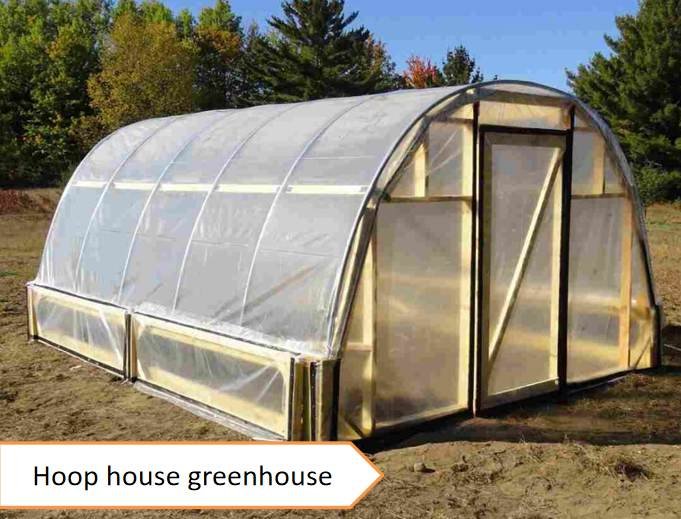
Suspended Greenhouse
Description
Suspended greenhouses are elevated structures that hang from support beams or are suspended from ceilings, allowing plants to grow upside down.
Features
Suspended greenhouses save floor space and offer unique opportunities for unconventional plant cultivation.
Ideal for
Innovative growers experimenting with vertical gardening techniques and space-saving solutions for urban agriculture or indoor farming.
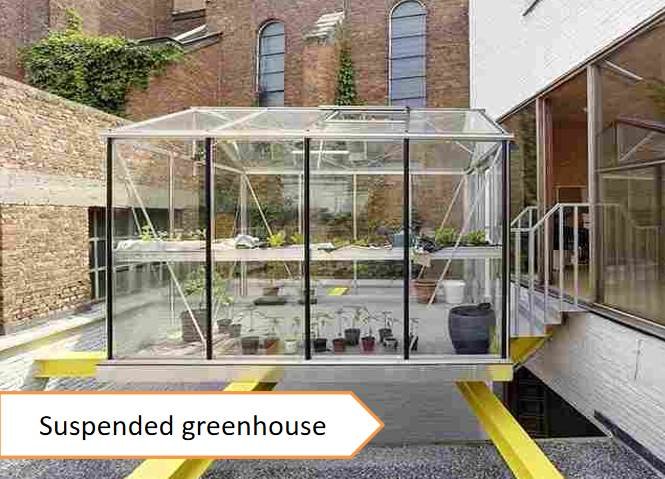
Vertical Greenhouse
Description
Vertical gardens commonly refer to hydroponic systems that utilize high-rises, skyrise buildings, and shipping containers among others that accommodate stacked-up planters vertically.
Features
Vertical greenhouses help maximize land use efficiency thus being suitable in cramped urban areas. Some of these may exploit techniques such as hydroponic systems and aeroponics whereby plants grow without soil.
Ideal for
Urban gardeners, restaurants, and commercial growers are interested in maximizing productivity in limited space while minimizing environmental impact.

Why A Greenhouse Is Needed?
- Season Extension: Greenhouses allow growers to extend the growing season by creating a controlled environment insulated from external weather conditions.
- Climate Control: Greenhouses provide a controlled climate where temperature, humidity, and ventilation can be regulated to create optimal growing conditions. This would especially be needed in regions where extreme weather abnormalities is a problem to tackle. Construction of greenhouses in such areas will allow the crop to thrive and sustain
- Protection from Pests and Diseases: Greenhouses offer a barrier against pests, insects, and diseases that can damage or destroy crops. By cultivating the crops in an enclosed structure, the infestation of pests would be reduced and also would improve the quality of the crop.
- Optimal Light Exposure: Transparent coverings such as glass or polycarbonate panels allow sunlight to enter the greenhouse, providing plants with consistent and uniform light exposure.By optimizing the light exposure, the process of photosynthesis is improved which in turn will encourage healthy growth, especially in the areas where sunlight is a problem.
- Water Conservation :Greenhouses reduce water consumption by minimizing evaporation and runoff. In the greenhouse, traditional irrigation such as borewell or manual irrigation would be a little difficult. To tackle this, one needs to opt for irrigation systems like drip or sprinkler irrigation that will allow even distribution of water by which water usage is minimized and this would also contribute to sustainability.
- Improved Crop Quality and Yield: By providing ideal growing conditions, greenhouses enhance the quality, flavor, and nutritional value of crops. This cultivation process in a controlled environment will also contribute to an increase in the yield without any compromise on the quality. The demand for the produce grown in a greenhouse is typically higher than the ones produced through normal cultivation processes in the field.
- Space Efficiency :Greenhouses allow for efficient use of space, particularly in urban or limited land areas where traditional farming may not be feasible. A hydroponic system can also be set up in specific types of structures that will help in utilizing all the existing space and thus contribute to resource efficiency.
- Research and Innovation: Greenhouse structures are good entities to use for research of any crop cycle. Good research work can be carried out as the external environment has nothing to do with and the crop behavior patterns can be studied perfectly.
- Localized Food Production: Greenhouses will offer great support in producing food in the local areas by enabling growers to cultivate a wide range of crops closer to urban centers and consumer markets. This localized food production will minimize the carbon footprint because the need for transportation is restricted and there is no cost incurred on fuel.
Conclusion
This is all about types of green house. Different types of greenhouses are available considering the flexibility in agriculture purposes and growing needs. Whether it involves prolonging the growing season, safeguarding crops from unfavorable weather conditions, or optimizing space utilization in urban areas, there exists a suitable greenhouse type for every cultivator’s preferences and objectives. Depending on the type of crop you prefer to cultivate and also the location you have chosen, the greenhouse might differ. Each greenhouse shall have a unique construction pattern and cultivation methodology that would not fit another greenhouse.
However, the produce grown in a greenhouse would be of good quality as proper growth conditions are maintained and hence the environment is controlled to meet the crop requirements. But, the limitation here is greenhouse establishment is a bit expensive thing and might demand enough capital. Apart from the costs incurred for construction, the rest of the cultivation can be done within the budget. Once the construction has been set up, that would be a fixed cost for the long term and one can maintain the continuity in the cultivation.


